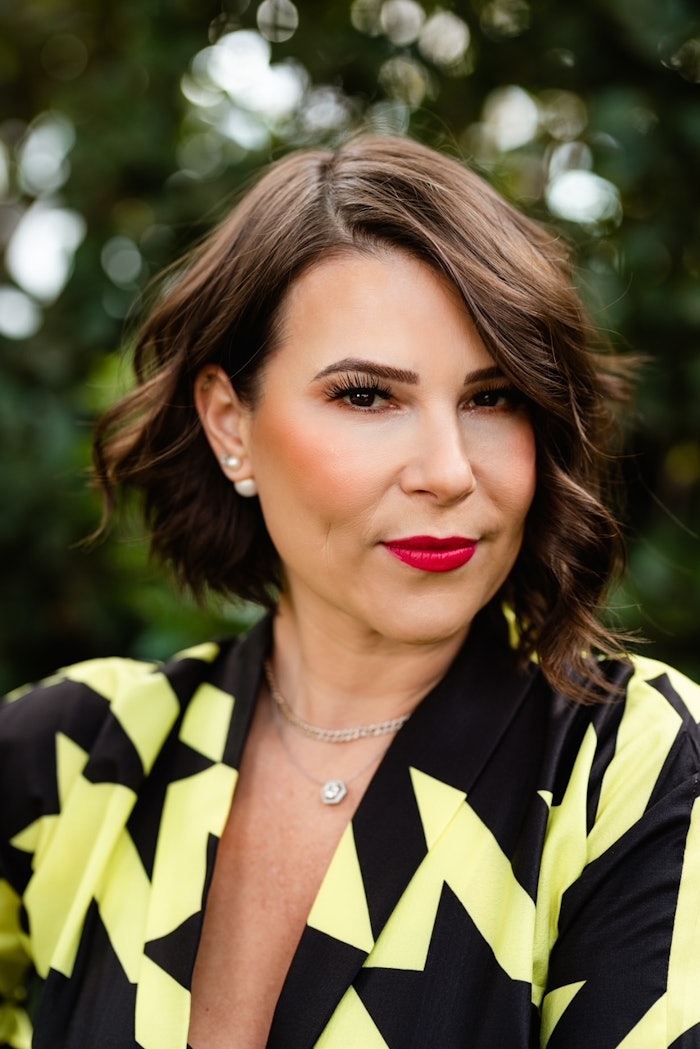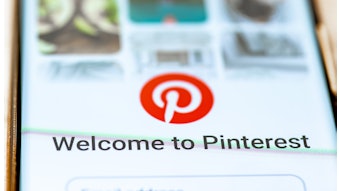
Laurel Mintz is the general partner of Fabric VC and CEO of Elevate My Brand, Inc.
Fabric VC’s mission is to weave together diverse founders with the funding they need and deserve. Its management and advisory teams combined have more than 60 years of expertise in vetting, leading and marketing brands in the consumer and technology spaces. It’s this experience, matched with its inspiring women, LGBTQIA+ and diverse-run portfolio companies, that is allowing Fabric VC to do great things in the world.
The fund came out of Laurel’s 14-plus years of marketing agency operating experience running Elevate My Brand (EMB). EMB has provided innovative, creative on and offline solutions for emerging brands and well-established companies since 2009. It has worked with more than 300 companies, 70% of which have been diverse-led. The agency supports its clients to gain desired visibility and profitability by working with business-to-consumer and business-to-business clients, developing and executing creative marketing plans that make the work simple and fun and free up time for its clients to focus on their core business purpose. EVB is the team behind the scenes that makes its clients look good.
Mintz has created an agency family serving both startups and blue-chip global brands like Facebook, Verizon Digital Media Group, PAW Patrol and Zendesk. Her favorite saying is FIOGID: figure it out, get it done. That is a motto she applies to every business venture. When Mintz is introduced to a new company, it’s important to her that it has all the traditional and typical requirements to be a strong force in the industry. Egos are checked at the door and empowerment is welcomed.
In this interview, she shares her excitement for new science emerging in the beauty and wellness sector, goes into detail about the trends she’s been spotting and discusses where the industry is headed.
What kind of companies do you look to invest in?
[LM]: I only invest in diversity, queer, BOPIC and woman-owned brands in consumer tech.
What are the elements in those companies that led you to invest in them?
[LM]: The companies are run through our proprietary Fabric Thread Count System, which tells us how strong they are in [the] market and how far they are from their competitors. That way we can tell if our check is going to meaningfully close that gap. These brands come to my digital agency first so we get to vet them then build them with digital marketing.
What makes a company attractive?
[LM]: It starts with the founder and their excitement around the products or services they are creating, as well as being in an upward trending market. Leadership is important, you have to be attracted to them and vibe with them first. They also of course have to be attractive from a financial standpoint— they must have their operations aligned and their marketing has to be a priority. A company needs all these traditional and typical requirements to be strong.
What is a turn off about a company?
[LM]: Egos around the founders; when they aren’t listening and when they think they know everything. There is a difference between being braggadocious and being empowered and excited about what you’re building, and having an ego that fills up the room and shows that they aren’t coachable. Having an ego can be very damaging to a startup brand and the team that you build up around it.
What makes a great founder and a great management team?
[LM]: It’s very important to be able to articulate their unique proposition, have a holistic perspective on growth and be solution oriented. It’s also critical to know what you’re good at and what you need to hire out for now and in the future as the company evolves.
What is most interesting to you about the beauty and wellness sector?
[LM]: There’s so much new science coming out and it’s really interesting to see brain health companies emerge and more research on mushroom and ketamine therapies. There are wellness categories that are on the precipice of something really exciting. I’m really looking forward to seeing successful case studies around these wellness outcomes and how they will be managed from a state and federal regulatory standpoint.
The wellness sector is also so important as it relates to people of color. Everyone is trying to be a lifestyle brand and not everyone actually is. Lifestyle is a holistic way to deal with a brand.
Any tips on sprucing up an investor deck?
[LM]: The investor deck is potentially the thing that is going to get you millions of dollars so make sure it is super polished and pretty and has all the typical investor deck needs. The easiest thing someone can do to spruce it up is hire someone, a graphic designer. It is not that expensive and there are a lot of different platforms out there that can assist you. Make sure it is not too long because investors have very short attention spans and we get decks like this all day long.
What makes you perk up when you hear it in an elevator pitch?
[LM]: What makes me excited are future plans, partnerships and thoughtfulness on building a brand long-term vision. There is a difference between being excited and passionate about a category versus having a vision. I get excited when a company is already thinking about expanding their marketing efforts and expanding their partnerships and of course how use of funds will support those efforts.
What trends have you been spotting and where is the industry going in 2022?
[LM]: I love the all-inclusive sizing conversation because it’s really valuable, important and relevant. Also, non-binary branding, messaging and positioning are very on trend right now. I think that is a generational evolution of Gen Z, Gen Alpha and even millennials who don’t want to be put into these gender, binary boxes. I think brands are evolving to speak to that, which is really smart.
What do you predict will be the future of beauty and wellness?
[LM]: Gosh, if I knew that I would be a billionaire already. I think we’re going to see a contraction; I hope that we’ll see a contraction. I feel that I get new beauty and skin care brands in my inbox every day and there are just too many products in the market. I hope we’ll get a contraction of products down to hero brands that will be big winners in the space.
What changes should a brand make in this time of transition?
[LM]: I don’t think brands need to make changes in terms of their look and feel. Transition from a branding perspective—you need to stay true to who you are, look, feel and target wise. I don’t think that branding needs to evolve from a macro perspective, currently. Transition from a company perspective—they need to use the money that they’ve raised and their scrappy approach and show different traction in marketing channels and a convergence with their audience. Companies need to focus on profitability versus the flashiness that was prevalent in the last few years. There were so many crazy valuations that were happening in venture land and companies didn’t have to think about profitability. They were just throwing money and [hoping]it stuck somewhere. Companies that have operational success and cohesive teams are going to be the winners in the long run.
What should beauty and wellness brands consider when seeking investors?
[LM]: I think they need to consider that they are in a hugely saturated market, so they need to be incredibly differentiated whether that’s packaging, brand name, targeting or ingredients. Honestly, not a lot of those things impress me at this point, so for me, beauty and wellness needs to be ingredient driven and have a unique future state concept like brain health, longevity, anti-aging, etc.










